#day night cycle
Text
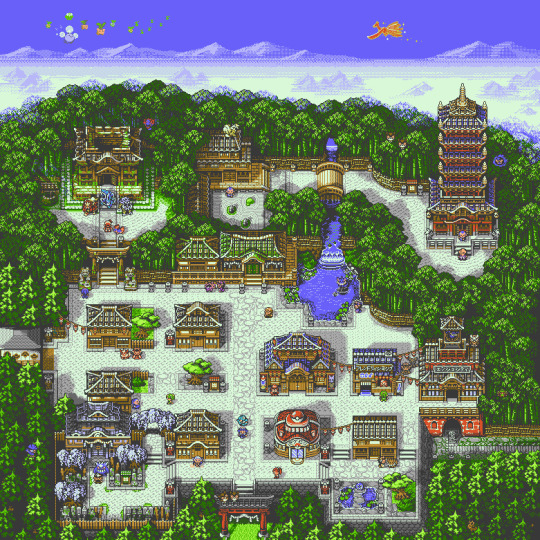
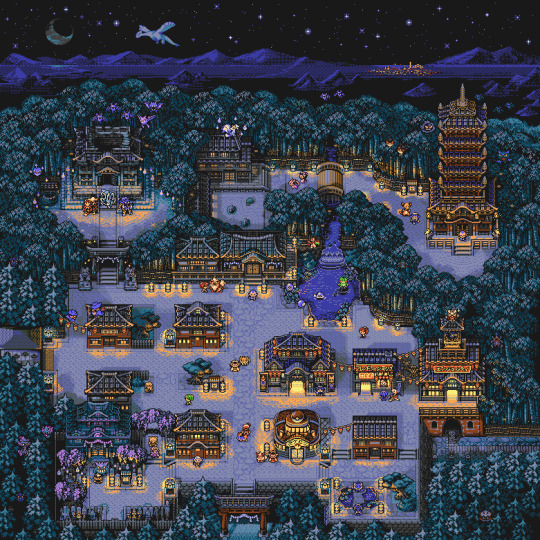
Gold & Silver - Day & Night
My Ecruteak City remake for Johto Redrawn
Ko-fi - Prints
Patreon - itch.io
#ドット絵#픽셀아트#pixelart#retroaesthetic#pokemon#johto#johtoredrawn#retrogame#gbc#japan#nightlights#ecruteak city#japan aesthetic#game boy color#famicom#super famicom#ho oh#lugia#day night cycle#yokai#suicune#entei#raikou#burned tower#bell tower#pokemon gold#pokemon silver
6K notes
·
View notes
Text
Löök at the Arctic in the center, it shows why the Sun never sets during the summer months.
Explanation 👇
The sun is circling at the tropic of Cancer. The highest position in the sky.
See how the center of the map is always in daylight? The Arctic is in daylight but areas below it have some nighttime.
This all day daylight is because of the height of the Sun at the tropic of cancer. Its observable position is very high in the sky.
Now interestingly,
Cancer was once known as the Unicorn.
Corn means the horn or HEAD.
The physical attribute of the Sun is that it is in its head, (top) position, in the sky.
Cancer is the top Sky position in tropical astrology NOT a constellation.
So the circling very high and in a tight circle creates different day/night hours depending on location.
Watch how the Arctic, and a few select places, are in Sun all day long while circling in June.
The center is a magnetic force making everything go round perfectly and always the same.
It’s The Center of the Toroidal field. 🤔
#pay attention#educate yourselves#educate yourself#knowledge is power#reeducate yourself#reeducate yourselves#think about it#think for yourselves#think for yourself#do your homework#do some research#do your own research#ask yourself questions#question everything#earth#sun#day night cycle#perfect design#tropical astrology
127 notes
·
View notes
Text
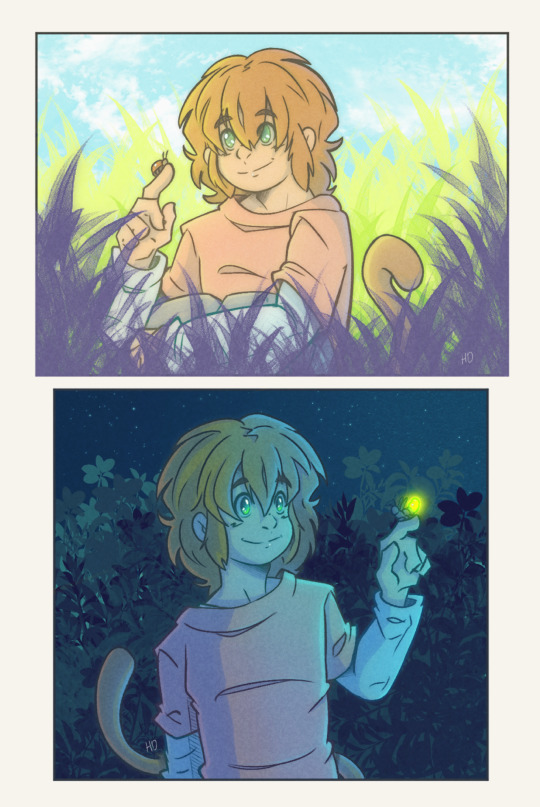
The little glimmers of springtime .
#spring#spring season#nature#firefly#ladybug#day night cycle#original art#color study#illustrations#ocs#oc#oc art#my ocs#Theo#monkey boy#digital art#digital illustration#my art#artists on tumblr
14 notes
·
View notes
Text
Day Night Cycle Added! 🌞🌔

Today I added a day night cycle to the game. The code already had time advancing set up, so I just needed to add in some display hooks.
What I did not expect was how much better the game would feel after adding in the day night cycle. It makes it more clear to me as the developer/player when time is advancing and when a new day will start.
This is critical in a management game where time management is key!
If you are developing a game or working on any project, consider what your audience needs to be aware of and make sure to clearly and consistently communicate that information to them.
10 notes
·
View notes
Text
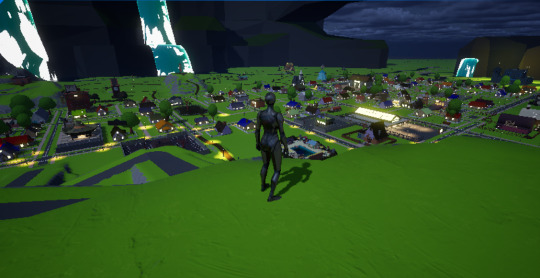
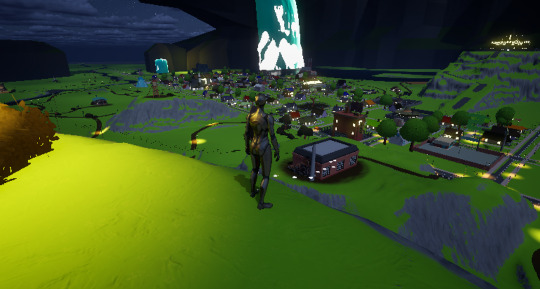
Gravity Falls wishes you a good night 🔦
12 notes
·
View notes
Text


#nature#landscape#mountains#village aesthetic#country life#countryside#mountain village#day night cycle#timelapse#cloudy nature
12 notes
·
View notes
Text

CONFESSION:
I kind of hope they bring back day/night cycles like they had in dragon age 2. Or something like them. It’d be nice to see different areas, the home base included, at different times. Maybe different encounters as well.
81 notes
·
View notes
Text
Bittersweet Cycle

An OC drawing of my guy Xiànshi as he goes through the cycle of life over....and over..... and over... and over..... Being immortal isn't easy on the lil guy who just wants to be around others and enjoy what life has to give. For every moon risen on a new friend the sun will set on a rain kissed grave....
#my art#digital art#original character#artwork#original art#art#lineless illustration#cycle#life cycle#Planet#timelapse#bittersweet#doggo#Day night cycle#day#night#sunset#sunrise#evening#Rainy#cave#graveyard
4 notes
·
View notes
Text

14 ноября 2023. Хотел обновить фурсону... Но передумал
#beginer artist#furry#redmi 9#anthro#furry oc#fursona#oc#furry anthro#protogen#day night cycle#night form#yellow#fur#galaxy#black hole#cosmos#ArhiD
3 notes
·
View notes
Text
Internal Cycles
Circadian rhythms and internal clocks have amazing, intriguing implications on how bodies take care of themselves and have to adapt to their environments.
Many communities online discuss the innate predisposition some people have towards being active at night. Some refer to the need for human communities to have individuals keeping lookout at night or dealing with certain tasks at different times than most of the group. Others bring up how being a night owl might connect to someone’s neurotype or mental health. How much empirical research do we have to affirm these ideas? We’ll start by discussing internal cycles.
Internal Cycles
Organisms have a timekeeping system based on the 24-hour cycle of light and dark. For many mammals, performing certain activities at specific times in the day-night cycle is imperative to survival, especially for prey species who avoid broad daylight for safety.
There is a difference between circadian rhythms and diurnal rhythms because circadian rhythms must proceed without external triggers like light, though most observed diurnal rhythms are also circadian1. This means that most cycles that determine activity in animals, while based on external factors, do continue in absence of those external factors. However, it is possible that Earth’s continuous rotation guides these rhythms1.
These rhythms can continue without those factors, but they usually sync with them when present, with the most well-known being syncing with daylight cycles.
Chronobiology is the study of these internal rhythms.
Cycle Disturbance
Interestingly, internal rhythms are impacted by light in different ways depending on when they are exposed to light1. Noise can also impact the circadian rhythm, which can also depend on if noise trauma occurs during day or night2. Additionally, external temperatures and thermoregulation can alter the cycle of sleep, thus impacting the close relationship between sleep and one’s circadian rhythm3. Of course, also just being awake at night, especially for an extended period of time, causes circadian misalignment6.
The impacts of disturbed circadian rhythms are extensive.
Circadian rhythms help regulate the cycle of body temperature, which strongly influences metabolism4. These influences are even found to link to obesity and diabetes5. Similarly to temperature and sleep, eating has a two-way relationship with the function of the circadian rhythm2.
A study involving more than 2 million participants found that circadian disturbances due to working night shifts are associated with increased morbidity of breast cancer and cardiovascular disease6,7. Clinical evidence also suggests causation of immune deficiencies, hypertension, and cholesterol abnormalities8.
Internal Workings
Circadian rhythms are a molecular mechanism. The circadian “pacemaker” is located in specific structures. In humans, the “pacemaker” is in the hypothalamus1. The signals put out rely on gene expression1, and the circadian rhythm system is “present in all cells whose prime function is to regulate behavioral and physiological processes”2. These cells are regulated by the “master clock” in the hypothalamus2. This regulating is guided by a transcription-translation feedback loop of circadian genes2.
Signals to other cells are sent through the autonomic nervous system or humoral signals2. Humoral signals, as opposed to neural signals, happen through the release of hormones which “communicate” through molecules9.
Light, for example, tends to bring this pacemaker into synchronization with it2. This is commonly how the pacemaker aligns with Earth’s day-night cycle.
Melatonin production is part of the circadian rhythm. Staying up late and being exposed to light, meaning light exposure until 01:00 in one study’s example, delays the melatonin cycle10.
The auditory system, specifically the cochlea and inferior colliculus, also have interesting changes throughout the circadian rhythm2. Neurotrophins are proteins important to the development, survival, and function of neurons. At night, the cochlea, part of the inner ear, is less able to induce a neurotrophin protective response than during the day2. This is why noise trauma affects the circadian rhythm differently during day and night, and can be more harmful at night.
Circadian Rhythms are Messed Up
Many factors influence the functions of the circadian rhythm. Chief among them is exposure to light while many other small factors can add up to easily throw off the cycle. These factors also mess up immune responses, eating habits, and many other vital functions.
Work frequently causes people to alter their circadian rhythms11. Many jobs require night shifts or alternating shifts that can keep people up both regularly and randomly past advisable times. This is an understandable necessity for medical jobs, but for many workers this is a result of poor economic circumstances and a system that does not exist for all people as much as it exists for money.
Of course, circadian rhythms in humans were able to become easily disrupted as artificial lights became more ubiquitous, and now exist in almost every home around the world. More influential perhaps are computers: smartphones and tablets and personal computers that bring bright light, often blue light, close to your eyes. Many people also use these devices extremely frequently. In 2015, out of a sample group of 1,062 undergraduates in China, 21.3% exhibited excessive use of smartphones associated with worrisome physical and psychological issues12.
Smartphone use often persists into late hours, which a study discussed earlier linked to delays in circadian rhythms10. Heavy smartphone use is also heavily associated with increased stress13. Stress is another factor that influences circadian rhythms, and can inhibit the body’s ability to receive time-of-day information14. Furthermore, most technology devices use blue light by default, which has been found to extensively worsen sleep quantity and quality15.
Is it Ever Innate?
Some people are self-described night owls, with habitual late bedtimes and late wake-up times. Most often, this is considered delayed sleep phase syndrome (DSPS)16. In a majority of cases, DSPS is a hindrance and associated with depression, bipolar disorder, and poor school or work performance16. Having a delayed circadian rhythm is generally bad for one’s health. Little empirical discussion exists regarding if there are advantages to DSPS, but it is not the only irregularity studied.
People can also have Non-24-Hour Sleep-Wake Disorder (N24), in which their circadian rhythm functions off of the usual 24-hour schedule17. Someone with N24 will go to bed at continually later or earlier bedtimes until that time circles around the 24-hour clock17. Research indicates that attempting to force a 24-hour clock in these situations results in severe sleep deprivation17. People who are blind with no perception of light can easily experience N24 because of the lack of light exposure to pull the circadian rhythm back into sync. About 55-70% of blind people experience N24, but it also occurs in sighted people17. Other causes of N24 include a change in light sensitivity, other changes in light exposure, reduced melatonin production, and genetics17. Different therapies have been used to try to treat N24, but results and success are limited17,18. While many people with N24 feel fine if allowed to sleep at the times their body wants to, some feel tired all the time under the same conditions19. However, N24 does not seem debilitating if not for the external societal factors that revolve around a 24-hour clock.
Summarily, an irregular circadian rhythm can be innate, and can be very disruptive to someone’s life. A variety of factors can cause conditions like DSPS or N24, or exaggerate pre-existing conditions. DSPS seems to be more severely harmful while N24 might only impact social and work schedules.
Mental Health
“A bidirectional relationship exists between mood disorders and circadian rhythms”20. People with bipolar disorder, for example, can have a genetic likelihood of slowed or delayed circadian rhythms16. Additionally, anxiety disorders, which often have comorbidity with depressive disorders, have a strongly-evidenced association with disrupted sleep and circadian rhythms21. Some studies have even seen circadian fluctuations in levels of anxiety throughout the day21. Additionally, having a late chronotype, or feeling more alert in the evening, has been found to have a strong association with psychological disorders and poor physical health22.
This causal relationship is likely two-sided. Depression and anxiety are related to stress, which we’ve discussed having impacts on the circadian rhythm. These disorders also can cause behaviours like staying up late and sleeping irregularly, which are also heavily influential on internal cycles. On the other hand, a delayed circadian rhythm can mean less exposure to sunlight, and vitamin D plays an important role in depression22. Additionally, parts of the brain such as the limbic regions, which determine behavioural and emotional responses, and the hypothalamic-pituitary-adrenal axis, which links perceived stress and physical stress responses, are under circadian regulation20. The circadian rhythm has direct influence on body hormonal responses and other activity, which has direct implications on the development and existence of psychological disorders. Regarding bipolar disorder specifically, multiple studies have indicated an association between certain circadian genes and bipolar disorder23.
Trauma or disorders such as autism have been noted to cause N24 because of damage to the brain and differences in brain development, as well as neurochemical or anatomical differences, respectively17.
While autism spectrum disorder (ASD) is primarily diagnosed based on behaviour, it etiologically involves differences in DNA sequences, prenatal and postnatal environments, and autoimmune and inflammatory factors24. Its etiology is not completely understood yet, but we do know that, in some cases, it includes mutations of genes that also control aspects of circadian oscillations24. This can include relevant neuroendocrine responses, and melatonin synthesis; very understandably, disruption to the sleep-wake cycle is very common for autistic people24. The relationship cannot accurately be described as ‘autism causes an irregular circadian rhythm’ or vice versa, but that there are factors that cause both ASD and irregular circadian rhythms.
Attention-deficit/hyperactivity disorder (ADHD, though this name is often criticized as a misnomer) is frequently associated with sleep disorders25. ASD and ADHD have many overlapping symptoms, so it makes sense that they share etiological factors such as gene differences and hormonal responses25. For ADHD, we can specifically discuss dopamine. ADHD is associated with low dopamine levels, which is linked to many of the behavioural differences associated with it25. A gene involved in the release of dopamine, DRD4, is also fundamental in the conversion of light to electrical signals in the brain25. Now understanding how much light reception is responsible for circadian oscillation, this is one more way to understand how strongly ADHD and the circadian rhythm are associated. Many times over, the factors involved in irregular circadian rhythms and neurological conditions are linked.
Another important note to add is that an irregular circadian rhythm can exacerbate the symptoms of many neurological disorders including autism and ADHD, as improving circadian oscillation or one’s sleep-wake cycle can alleviate some of the related symptoms24,25.
Practicality
The circadian rhythm has a dominant role in almost all functions of our bodies, as every cell has its own circadian clock. This rhythm helps determine sleep, healing, metabolism, mental health, and many more vital aspects of daily life. Factors like light exposure, stress, hormonal changes, and many more are ways for the circadian rhythm to be changed, disturbed, delayed, or otherwise out of sync. In modern days, light exposure from devices and working late shifts are primary components of circadian disruption.
If our economic system changed to value its workers and more people could follow the innate, ideal cycles of sleep, how much would mental health conditions improve? Likely to a major degree.
In some cases, circadian rhythms are irregular on their own from genetic variations or complete blindness. The biggest problems in these cases are societal expectations forcing someone into a routine that doesn’t work for their body. Research is starting to develop for those who suffer due to circadian abnormalities, but there is no one right answer, as is the nature of medical science.
Overall, understanding the circadian rhythm is extremely helpful to understanding how we function within our environment, and why we might be experiencing certain things. Many people are aware of the contradiction between how important we are told sleeping enough is and the fact that we live in a system that makes doing so very difficult. Of course, if you can try to balance your circadian rhythm, it can be very beneficial to do so. The best we can do is try.
Additional Resources
1. https://www.ncbi.nlm.nih.gov/pmc/articles/PMC6707128/
2. https://www.ncbi.nlm.nih.gov/pmc/articles/PMC7341678/
3. https://jphysiolanthropol.biomedcentral.com/articles/10.1186/1880-6805-31-14
4. https://www.ncbi.nlm.nih.gov/pmc/articles/PMC7678948/
5.https://www.nature.com/articles/hr201612#:~:text=Physiological%20circadian%20oscillation%20is%20impaired,in%20both%20humans%20and%20rodents.
6. https://www.ncbi.nlm.nih.gov/pmc/articles/PMC4790999/
7.https://www.sciencedirect.com/science/article/abs/pii/S1389945715007479?via%3Dihub
8. https://www.ncbi.nlm.nih.gov/pmc/articles/PMC3761885/
9.https://pressbooks-dev.oer.hawaii.edu/biology/chapter/regulation-of-hormone-production/#:~:text=Humoral%20stimuli%20refers%20to%20the,in%20response%20to%20neural%20stimulation.
10. https://www.ncbi.nlm.nih.gov/pmc/articles/PMC3925648/
11. https://www.sciencedirect.com/science/article/abs/pii/S0196064401533296
12. https://www.ncbi.nlm.nih.gov/pmc/articles/PMC5114822/
13. https://onlinelibrary.wiley.com/doi/10.1002/smi.2805
14. https://www.sciencedirect.com/science/article/pii/S2352289516300194
15. https://psycnet.apa.org/doiLanding?doi=10.1037%2Fapl0000806
16. https://www.ncbi.nlm.nih.gov/pmc/articles/PMC4225198/
17. https://rarediseases.org/rare-diseases/non-24-hour-sleep-wake-disorder/
18. https://www.sleepfoundation.org/non-24-sleep-wake-disorder/treatment-care
19. https://www.circadiansleepdisorders.org/docs/N24-QandA.php
20. https://www.nature.com/articles/s41398-020-0694-0
21.https://www.sciencedirect.com/science/article/abs/pii/B9780128199756000169?via%3Dihub
22. https://www.sciencedirect.com/science/article/pii/S0896627323007109#bib5
23. https://onlinelibrary.wiley.com/doi/pdfdirect/10.1111/pcn.12688
24. https://pubmed.ncbi.nlm.nih.gov/31682208/25. https://link.springer.com/article/10.1007/s12402-018-0271-z
#circadian rhythm#internal cycle#day-night cycle#day night cycle#research#article#sources#environment#light#work#economy#mental health#physical health#long post#very long post
1 note
·
View note
Text
vimeo
ONE REVOLUTION PER MINUTE
It takes place aboard the "SSPO Esperanta" - a planetary orbiter that spins around itself at a rate of one revolution per minute (1 RPM). With a radius of 450 meters, the spin generates artificial gravity with an effect of approximately 0.5 g along its main deck.
With the "Esperanta" I wanted to create a leisure-like environment, such as a hotel or cruise ship, and explore what the views could be like onboard when the orbiter visits some of the worlds in our solar system. I was also particularly interested in how light and shadows from the sun play around in the interior as it spins around.
For those reasons, I decided to keep all artificial lights off - with the exception of some emergency lights to avoid complete darkness - and to only let natural light illuminate the interiors. As this made the place appear quite desolate, I found it interesting to imagine someone being onboard…
0 notes
Text
youtube
#vidIQ#PokeWilds#55.3#Pokemon#Pocket Monsters#Monsters#Monsties#Beasts#Balls#Poke Balls#Retro#Retro Styled#Pixels#Pixel#Survival#Survival Simulator#Day Night Cycle#Graphics#Items#Turn Baced#Survival of the Fittest#Building#Construction#Top Down#Open World#Enter a comma after each tag#Youtube
0 notes
Text
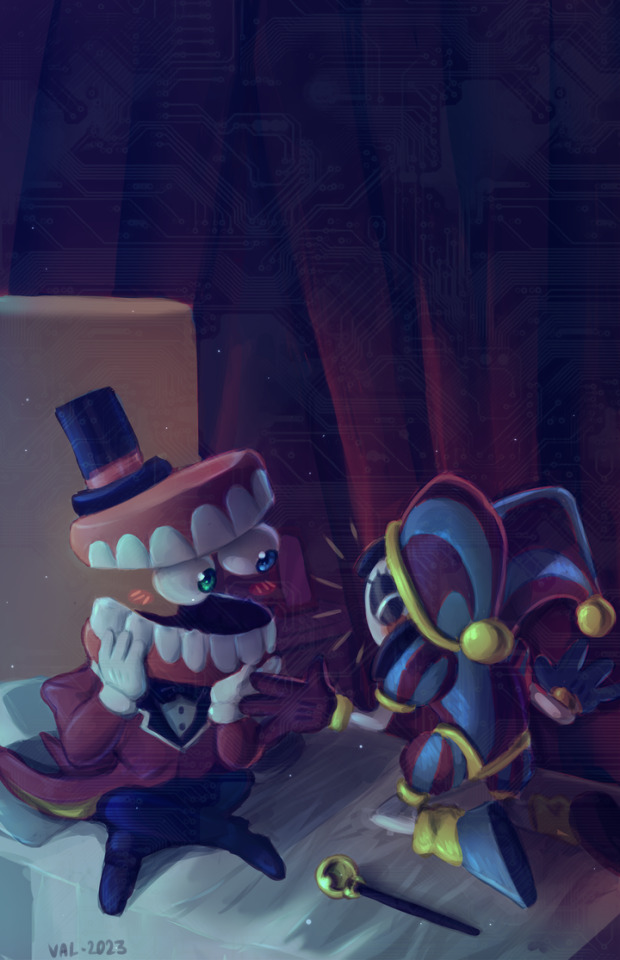

You have my whole (digital) heart
#tadc#the amazing digital circus#tadc caine#tadc pomni#caine#pomni#showtime#caine x pomni#pomni x caine#tadc showtime#showtime ship#showtime shipping#my art#FINALLY I've finished this set!!!!!!!!!!!!#pardon the quality change this has been sitting in my drafts for a while#anyway. they should cuddle#pretend there's some semblance of a real day/night cycle in the digital world
2K notes
·
View notes
Text
Thinking rambly Thoughts about Athena and her genderfuckery and her relationships with Odysseus and Penelope.
Anyway I think it’d be neat if Athena functioned as both Odysseus’ wife and Penelope’s husband in each others absence (and also as a father to Telemachus). Not even necessarily in a romantic way, just a weirdly intimate but unknowable ThingTM they have going on with Athena
TFW your in a triad and one member is a virgin goddess whose definitely playing with you and your family’s lives like Barbie dolls
#just rambles that came to me on the verge of sleep last night#Athena is the third member of Odysseus and Penelope’s relationship but in the Weirdest way possible#Athena thoughts all day every day this week#the odyssey#Odysseus#Penelope#athena#tagamemnon#epic cycle
2K notes
·
View notes
Text
Cody: *physicallf carrying Obi-Wan out of the war room* Come on, General, it’s go-the-fuck-to-sleep time.
Obi-Wan: Ahh. Go-the-fuck-to-sleep time. I know it well. It’s the most sacred three times of the week.
Cody: *stops dead in a corridor* …please tell me that was a joke?
Obi-Wan: I would never joke about go-the-fuck-to-sleep time. It was Master’s favorite time the first few years we were together.
Cody: *closes eyes and counts to five* We’re going to talk about all that later. *keeps heading off to Obi-Wan’s quarters, with more purpose this time*
#i changed the number from 4 to 3 because there are only 5 days in SW weeks#Cody is very offended that Qui-Gon was only enforcing bedtime 3 times a week#star wars#obi wan kenobi#incorrect star wars quotes#clone wars#incorrect clone wars quotes#commander cody#codywan#Obi is only letting Cody carry him cause he’s been awake 3 days already he forgot how to walk lmao#Qui made a deal that if he only enforced 3 nights of sleep Obi wasn’t allowed to fight him on it lmao#oddly enough even tho the healers whined about it Obi was healthier than ever for that time#it helped regulate his sleep cycle for a long while#which has mostly gone out the window since Qui died
1K notes
·
View notes
Text
no one bother me I'm too busy thinking about how Jackson always longed to see the night sky before the trigger change and how some of his first experiences seeing it were probably when he was disoriented and alone in some lonely dingy alleyway in the middle of nowhere
#thinking about how jackson describes his life in the webisodes#and how their original Jekyll-Hyde trigger was the day and night cycle#ooooohhhhh#the implications#logically Jackson might've still seen night before he realized the trigger change and before he started getting left in random ass alleyway#but where's the fun in that#monster high#jackson jekyll
109 notes
·
View notes